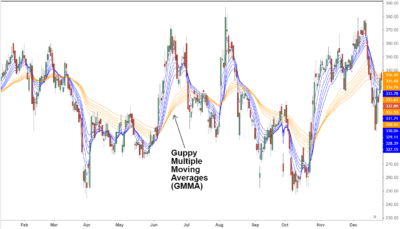Harami Pattern
Contents:

The first is as a short term pullback strategy where a trader aims to profit from the downswing or upswing that happens after the pattern forms. Several traders attach more importance to the Harami cross candle pattern compared to the regular Harami pattern. Just like the normal Harami patterns, there are also two types of Harami cross patterns–Bullish and Bearish.

In this case, we have a longer bearish candle during a bearish trend and a second bullish candle that is smaller and fully engulfed by the previous candle. The confirmation will come if we get a third bullish candle that closes above the close of the previous bullish candle. Now, you might also want to look at volume of the individual candles that make up the bullish harami pattern. For example, if the volume of the bearish candle is very high, it might indicate a final blowoff, as we talked about before.
How to trade the Harami candlestick pattern?
The harami candlestick pattern is one of the several patterns that is used to find bullish and reversal patterns in the market. In this article, we have looked at what the candle is and how you can use it well. The first candle is usually long, and the second candle has a small body. The second candle is generally opposite in colour to the first candle. On the appearance of the harami pattern, a trend reversal is possible.
It then formed a big bullish candle that was then followed by a small candlestick. Shortly afterwards, this was followed by a bearish trend. The confirming candle is used to advise traders whether the smaller following candle initiates a reversal or continues the trend established by the starting candle. The harami pattern’s and other candlestick patterns’ popularity stems from their ability to catch a reversal at the most opportune time with minimal risk. Traders will be able to achieve exceptionally favorable risk-reward ratios as a result of this. A bearish harami pattern occurs in an uptrend and indicates that trend will change from up to down.
Entering a Bullish Harami Trade
A https://forexhistory.info/ harami is a basic candlestick chart pattern indicating that a bearish trend in an asset or market may be reversing. Without all these additional pieces of information, it is too risky to depend solely on this one pattern to take a position. Applied to the bearish harami pattern, you could demand that the ranges of the candles making up the pattern are bigger than the surrounding ranges. That would suggest that more market participants took part in forming the pattern, which increases its significance.
Markets end in red as selloffs in metal, IT stocks weigh; FIIs continue to offload equities Mint – Mint
Markets end in red as selloffs in metal, IT stocks weigh; FIIs continue to offload equities Mint.
Posted: Mon, 06 Feb 2023 08:00:00 GMT [source]
The best way to do this is to wait for the next candlestick to close. The bearish harami pattern indicates that the market is losing momentum. The market will often continue to decline after the bearish harami pattern appears, but this pattern can also be used as a signal to take a short position. This is because it indicates that buyers are losing interest in an instrument, which could result in a large sell-off. However, it is best to use this pattern on lower timeframes like 1M and 5M.
The bearish harami pattern is formed at the top end of an uptrend. The idea is to initiate a short trade near the close of P2 . The risk-averse will initiate the short near the day’s close only after ensuring it is a red candle day. A bullish harami candle pattern is formed at the lower end of a downtrend. The idea is to initiate a long trade near the close of P2 . A risk-averse trader will initiate the long trade near the close of the day after P2 only after ensuring it forms a blue candle day.
Read more on Trading with Harami Candlesticks
When reading candlestick charts, be mindful of the time frames of trading, classic price patterns and price action. Dark Cloud Cover is a bearish reversal candlestick pattern where a down candle opens higher but closes below the midpoint of the prior up candlestick. A Marubozu Candlestick pattern is a candlestick that has no “wicks” . A green Marubozu candle occurs when the open price equals the low price and the closing price equals the high price and is considered very bullish. A red Marubozu candle indicates that sellers controlled the price from the opening bell to the close of the day so it is considered very bearish. Analysts looking for fast ways to analyze daily market performance data will rely on patterns in candlestick charts to expedite understanding and decision-making.
- Not only does a single candle tell a story but the real bodies and wicks also form those key support and resistance levels.
- A line drawn around this pattern is said to resemble a pregnant woman by some.
- When the first bullish candle of the pattern forms, market sentiment is bullish.
- If entering a short, a stop loss can be placed above the high of the doji or above the high of the first candle.
- But the important point was the fact that we saw other candlestick formations confirm what the harami cross was telling us.
Just like on a normal bear market day it will be seen that prices opened lower when they are compared to the close of the previous day. However, bears often lose control and therefore the gap fills very quickly. When the bulls take control, price continues to increase.
Instead of the second candlestick is completely within the first, you will find that it is more often matching the close of the first candlestick only. The above example is what you’d expect to see in most markets, but if you are trading forex, there is a slight difference. We are looking for two candlesticks, 1 large-bodied selling candle and 1 small-bodied buying candle. Now you know the theory of a harami formation, time to look at how to identify the formation. With this in mind, you will now understand that the scales have potentially tipped in favour of the buyers now, thus creating a reversal. Then for the buyers to pick up the price quickly and challenge this large volume of sellers, also suggests that there is a surge of buyers entering the market.
Chart patterns, candle patterns, support and resistance levels, and other indicators should be used. A smaller body on the following Doji must close higher within the body of the previous day’s candle to form a bullish harami, indicating a larger possibility of a reversal. As per candlesticks, all the patterns you mentioned indicate trend reversals. On P1, the market trades higher and makes a new high and closes positively forming a blue candle day. The trading action reconfirms bulls dominance in the market.
On the second candle, the market gapped down at the open. Day 2 showed a bearish candlestick which made the bearish Harami look even more bearish. The first Harami pattern shown on Chart 2 above of the E-mini Nasdaq 100 Future is a bullish reversal Harami.
This https://forexanalytics.info/s the kind of trade you’ll make whether long or short. In case of a bearish harami, you should place a sell-stop slightly below the bigger candlestick. Another thing you can see is that the two candles have an upper and lower shadow. Additionally, the harami candles have a close resemblance to an engulfing candle. The only difference is that in an engulfing, the smaller candle is usually followed by the bigger candle.
Harami Candlestick Patterns: Trading the “Inside Bar”
A chart formation is a recognizable pattern that occurs on a financial chart. How the pattern performed in the past provides insights when the pattern appears again. A doji is a trading session where a security’s open and close prices are virtually equal. In this instance the bullish haramis signal only a brief recovery rather than a major change in sentiment.
The exponentiality here implies that a pullback might be coming. We identify a bearish and a bullish reversal Harami candlestick pattern, based on the two candles being bullish and bearish or bearish and bullish. When the closing price and high price are the same or very close to each other, a Doji appears.
How to set up trade with a bullish harami pattern?
The piercing pattern indicates a reversal in an ongoing downtrend, which means when this pattern appears in a continuous downtrend, the trend will change from down to up. Harmonic patterns are used in technical analysis that traders use to find trend reversals. By using indicators like Fibonnaci extensions and retracement… The harami candlestick pattern has trend reversal characteristics. Now that we have covered the basics of the harami candlestick pattern, it’s now time to dive into tradeable strategies. Please note all of the subsequent examples are on a 5-minute time frame, but the rules apply to other time frames just as well.

Here, the https://day-trading.info/ trade will be initiated if the price moves above the shadow. Two candles of opposite colors doesn’t always mean a reversal. Lets say in a down trend, when P2 opens higher than P1’s close and closes higher than the P1’s open, it doesn’t come under any of the reversal patterns. The risk-taker will initiate the trade on day 2, near the closing price of 125.
Cory Mitchell, CMT is the founder of TradeThatSwing.com. He has been a professional day and swing trader since 2005. Cory is an expert on stock, forex and futures price action trading strategies. A candlestick chart typically represents the price data of stock on a single day, including opening price, closing price, high price, and low price. For example in Figure 2 a trader could use the bearish harami signal as a point on which to enter the market long.



Sorry, the comment form is closed at this time.